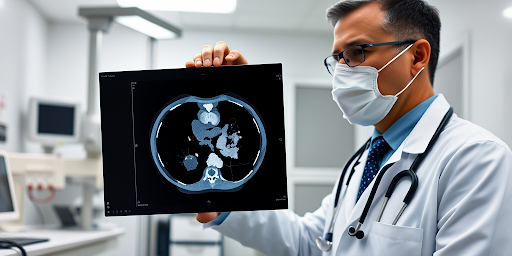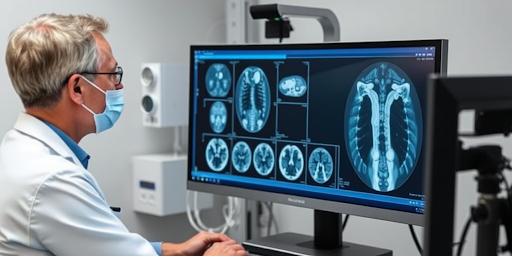Have you ever wondered why some fat is far more hazardous than others?
You might notice fat just beneath the skin, but visceral fat tracking around your organs poses a greater metabolic risk.
Understanding these distinctions is essential to optimize your nutrition and metabolism.
This exploration unpacks the anatomical and functional differences between subcutaneous and visceral fat, empowering you with practical insights to tailor your lifestyle and achieve effective body composition management.
Anatomical and Metabolic Characteristics: Subcutaneous & Visceral Fat Insight
Subcutaneous fat is stored directly beneath your skin, acting as an energy reservoir and protective cushion, while visceral fat is deposited deeper within your abdominal cavity, surrounding vital organs. These anatomical differences mean that each fat depot has unique cellular compositions. Subcutaneous fat cells are generally larger and less metabolically active, whereas visceral fat cells are densely packed and display higher metabolic activity, predisposing them to rapid biochemical changes.
The hormonal environment of these fat depots also differs markedly. Visceral fat is known to release significant amounts of inflammatory cytokines, including IL-6 and TNF-α, particularly when the cells experience hypoxia as they enlarge. This release contributes to endocrine imbalances by causing high levels of leptin and diminished adiponectin, which can adversely affect your body’s insulin sensitivity. In contrast, subcutaneous fat has a more moderate endocrine profile, contributing less aggressively to systemic inflammation.
These cellular and hormonal distinctions influence overall metabolism and disease risk. Increased visceral fat can heighten metabolic risk by promoting inflammatory responses and disrupting normal lipid metabolism, which in turn can lead to insulin resistance and other endocrine dysfunctions. A closer understanding of these metabolic markers can help you appreciate the differing impacts these fat types have on your overall health.
- Elevated inflammatory cytokines (IL-6, TNF-α) from visceral fat.
- High leptin levels and low adiponectin causing endocrine imbalance.
- Greater insulin sensitivity impairment in visceral fat.
- More pronounced activation of inflammatory response pathways.
- Differential impact on lipid metabolism between fat depots.
Lifestyle & Nutritional Strategies to Manage Subcutaneous vs. Visceral Fat

What dietary changes help reduce harmful visceral fat? Answer: Consuming whole grains, high-fiber foods, and healthy fats from sources such as avocados, nuts, seeds, and fish. These foods slow carbohydrate absorption and help manage insulin responses. They also supply essential nutrients for metabolic remodeling by reducing systemic inflammation. Emphasize naturally nutrient-dense options that support energy reserves and provide a stable supply of fuel throughout the day. This dietary strategy not only improves lipid profiles but also moderates inflammatory responses linked to visceral fat accumulation.
Physical activity further enhances fat management. Aerobic exercise stands out for its efficiency in burning visceral fat by increasing heart rate and stimulating fat oxidation. Complement this with resistance training, which boosts basal metabolic rate and builds muscle mass. This combination assists in overall body composition improvements and sustains long-term metabolism. Engaging in regular exercise also helps lower stress hormones, reducing additional inflammatory triggers that contribute to adipose tissue deposition. Utilizing these lifestyle modifications promotes a healthier balance between subcutaneous and visceral fat, crucial for metabolic health and energy management.
- Opt for whole food sources over processed alternatives.
- Increase daily fiber intake through vegetables and legumes.
- Incorporate at least 150 minutes of aerobic exercise weekly.
- Add resistance training sessions two to three times per week.
- Maintain consistent sleep routines to enhance recovery.
- Practice stress management techniques, such as mindfulness or meditation.
Personalized and Integrative Approaches for Reducing Visceral Fat Dangers
What is the most effective strategy to reduce visceral fat dangers?
Answer: Personalized nutrition planning combined with tailored exercise routines, mindfulness stress management, and community wellness initiatives.
You can break free from failed diets by adopting an integrative lifestyle medicine approach that tailors nutritional plans and behavioral changes to your unique genetic predispositions and lifestyle factors. A personalized meal plan ensures that you obtain the right balance of healthy fats, fiber-rich carbohydrates, and lean proteins, which supports hormonal balance and reduces systemic inflammation. Consistent exercise routines, both aerobic and resistance training, help to boost your metabolism and improve insulin sensitivity. Integrative strategies also emphasize proper sleep hygiene and stress management practices, both of which are essential in combating low energy levels and reducing the risk of hormonal imbalances linked to visceral fat.
Behavioral weight management plays a critical role in maintaining these changes over the longer term. By focusing on mindfulness stress management techniques and involving community wellness initiatives, you can create a support network that sustains your progress. Tailored exercise routines not only improve your metabolic outcomes but also build confidence in your ability to overcome chronic bloating and stubborn fat. Embracing a holistic plan that integrates nutrition, behavior modification, and consistent tracking allows you to regain control of your metabolic health.
- Adopt mindfulness practices to reduce stress.
- Implement effective stress management techniques.
- Follow a personalized meal plan targeting hormonal balance.
- Engage in community wellness initiatives for continuous support.
- Regularly track your progress to adjust strategies as needed.
Final Words
In the action of dissecting your body composition, you have learned how distinct fat types affect health. Each segment clarified differences in cellular behavior, metabolic markers, and lifestyle impacts. You also uncovered innovative methods for measurement and personalized strategies for better well-being. Embrace the insights of Subcutaneous vs. Visceral Fat: What’s the Difference and Why It Matters, and apply these principles to steer your health journey efficiently. Enjoy implementing these targeted approaches for sustained vitality and long-term success.
FAQ
Q: What are the key differences between subcutaneous and visceral fat?
A: Subcutaneous fat sits directly under your skin and is less metabolically active. Visceral fat surrounds internal organs, produces inflammatory compounds, and poses greater health risks due to its proximity to vital organs.
Q: How can I tell if I’m losing visceral fat?
A: Key indicators include a decreasing waist circumference, looser-fitting clothes around your midsection, improved energy levels, and better blood work results, particularly regarding insulin sensitivity and inflammatory markers.
Q: What’s the fastest way to reduce visceral fat?
A: Combine regular aerobic exercise with resistance training, maintain a whole-food diet rich in fiber, and practice time-restricted eating. These methods specifically target visceral fat through metabolic optimization.
Q: Are love handles subcutaneous or visceral fat?
A: Love handles are primarily subcutaneous fat deposits located at the sides of your waist. While less metabolically active than visceral fat, they can still indicate overall excess fat storage.
Q: Can someone have low subcutaneous fat but high visceral fat?
A: Yes, this condition is known as “skinny fat” where someone appears slim but carries dangerous levels of visceral fat around their organs, often due to poor diet and lack of exercise.
Q: Why is some subcutaneous fat necessary?
A: Subcutaneous fat provides essential energy storage, hormone regulation, temperature control, and protective cushioning for your body. It plays a vital role in maintaining overall health.
Q: What’s the most accurate way to measure visceral fat?
A: Advanced imaging techniques like CT scans and MRI provide the most accurate measurements of visceral fat. However, waist circumference and waist-to-hip ratio offer practical at-home assessments.


